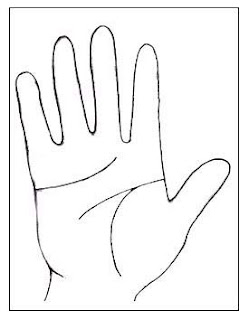The larger the thumb, the greater the degree of success. Apparently Napoleon had an extremely large thumb. It’s an interesting exercise to watch people’s hands on television. Often you will find actors playing roles that they could never have achieved in real life. An example of this would be someone with a small thumb playing the part of a successful business tycoon. In India, it’s believed that the size of the thumb has a direct relationship with the degree of success the person will have in life.
I find this interpretation a bit too fatalistic, but there is no doubt that people with large thumbs usually reach top positions. These people are generally more motivated, ambitious and persistent than people with small thumbs.
Charlotte Wolff did a survey of the thumbs of successful individuals and found that most had thumbs of normal length. Certainly, people with long thumbs will try much harder to get what they want than people with short thumbs.
If you find someone with an extremely long thumb, they’re capable of a leadership role in any situation. This person will be intelligent, decisive and have a very strong will power.
People with short thumbs are lacking in will power. They can be stubborn, though often for no apparent reason.
People with medium length thumbs (reaching at least halfway up the lowest phalange of the First finger) are fair and can stand up for themselves. They show common sense and possess reasonable will power. If the thumb is broad, looking at it from the nail side, the person will be prepared to do whatever is necessary to get what he or she wants. Someone with a thick thumb will be extremely blunt and forthright. This person will be stubborn and want their own way at any cost.





